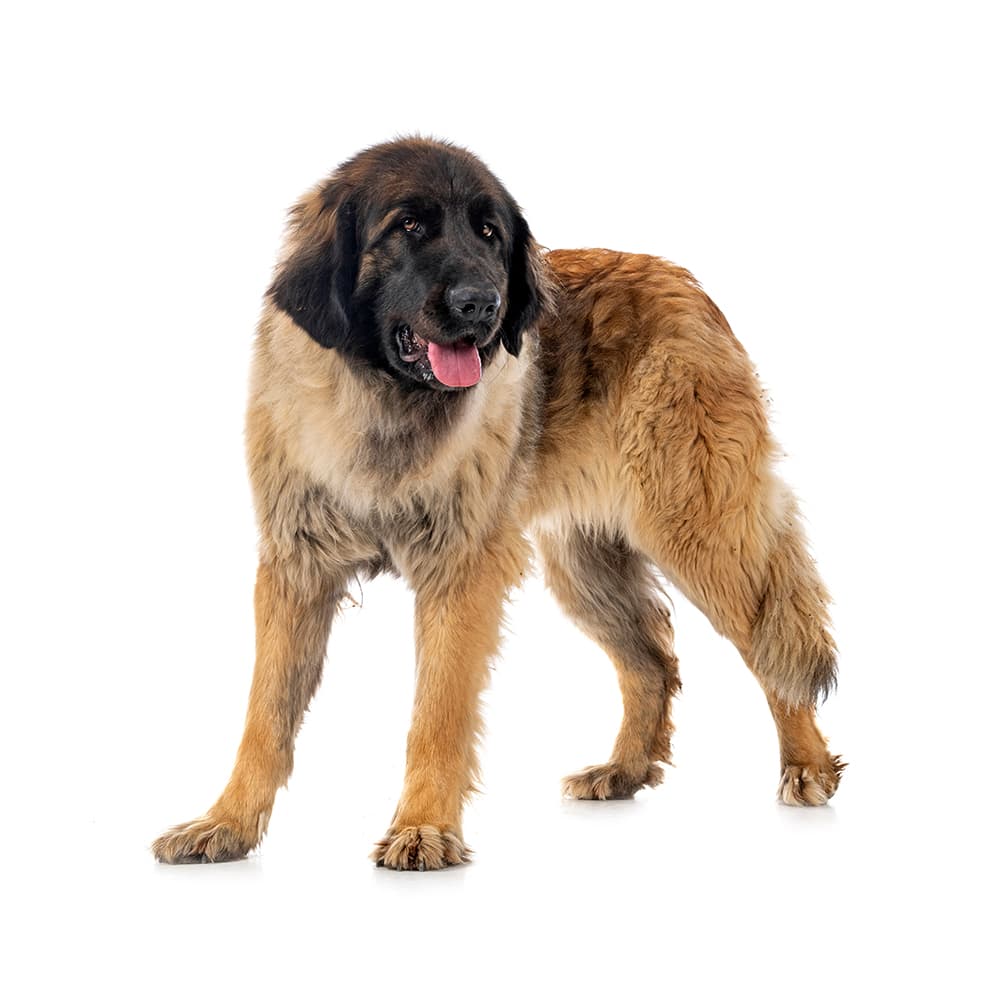Discover your dog's connection to this breed and 200+ others


Discover your dog's connection to this breed and 200+ others



The Leonberger is a large and powerful dog breed with a history dating back to the 19th century. It was developed by politician and entrepreneur named Heinrich Essig in Leonberg, Germany. He crossed St. Bernards, Newfoundlands, and Great Pyrenees dogs. The breed was initially bred to resemble the lion on the town's crest, and it quickly gained popularity as a majestic and versatile working and companion dog. Napoleon III, Tsar Alexander II and King Edward VII all added the Leonberger to their royal court. Leonbergers are used as working dogs on farms, pastures and waterfronts. They are surprisingly good swimmers and are very good at pulling carts, some Leonbergers have also been used as rescue dogs in Canada.
Leonbergers are large dogs that are susceptible to bloat, also known as gastric dilation volvulus (GDV). This is a life-threatening condition that can come on suddenly, so it’s important to know the warning signs and get an affected dog immediate veterinary care. This breed may also suffer from cancer, cataracts, heart problems, hip dysplasia, juvenile-onset polyneuropathy, and thyroid problems.
Leonbergers are known for their gentle, calm, and friendly nature. They are highly devoted to their family members and are excellent with children, making them great family pets. Despite their imposing size, they are typically gentle giants and are not aggressive. They are intelligent, trainable, and eager to please, which makes them suitable candidates for various activities such as obedience, therapy work, and water rescue. Their long coats shed a lot and should be brushed daily.
A canine genetic lineage is a group of individuals or entire breeds that descended from common ancestors predating modern breed formation. Often these lineages are associated with a ‘type’ of dog with a unique historical working role and associated behaviors (e.g., herding, scent hunting, etc.).
Mastiff and bull-type breeds have strong, muscular builds. Both mastiff and bull-type breeds are protective and loyal, which are essential traits for this breed as guardian dogs and as companions. Although they appear imposing, many of these breeds are known for their gentleness and affection towards their families. They are a great example of loyal guardian dogs.
Example breeds with ancestry from this lineage include French Bulldog, St. Bernard, and Bullmastiff.
Lifesaving Abilities: Leonbergers have a history of being water rescue dogs. They are known for their strong swimming abilities and were once used to rescue drowning people.
Celebrities' Choice: Several notable figures throughout history, including Napoleon II, Empress Elisabeth of Austria, and King Umberto I of Italy, have owned and admired Leonbergers.
Leonbergers have a double coat, with a dense and water-resistant outer coat and a thick undercoat. Their fur is moderately long, straight, and slightly wavy. The mane around the neck and chest area is more pronounced in males, giving them a more majestic appearance.
https://www.akc.org/dog-breeds/leonberger/
https://www.petmd.com/dog/breeds/c_dg_leonberger
https://www.pawprintgenetics.com/products/breeds/271/ https://www.fci.be/en/nomenclature/LEONBERGER-145.html
https://www.ukcdogs.com/leonberger
Recommended by top vets with decades of experience
21 breeds
64 genetic health markers
50 genetic trait markers
